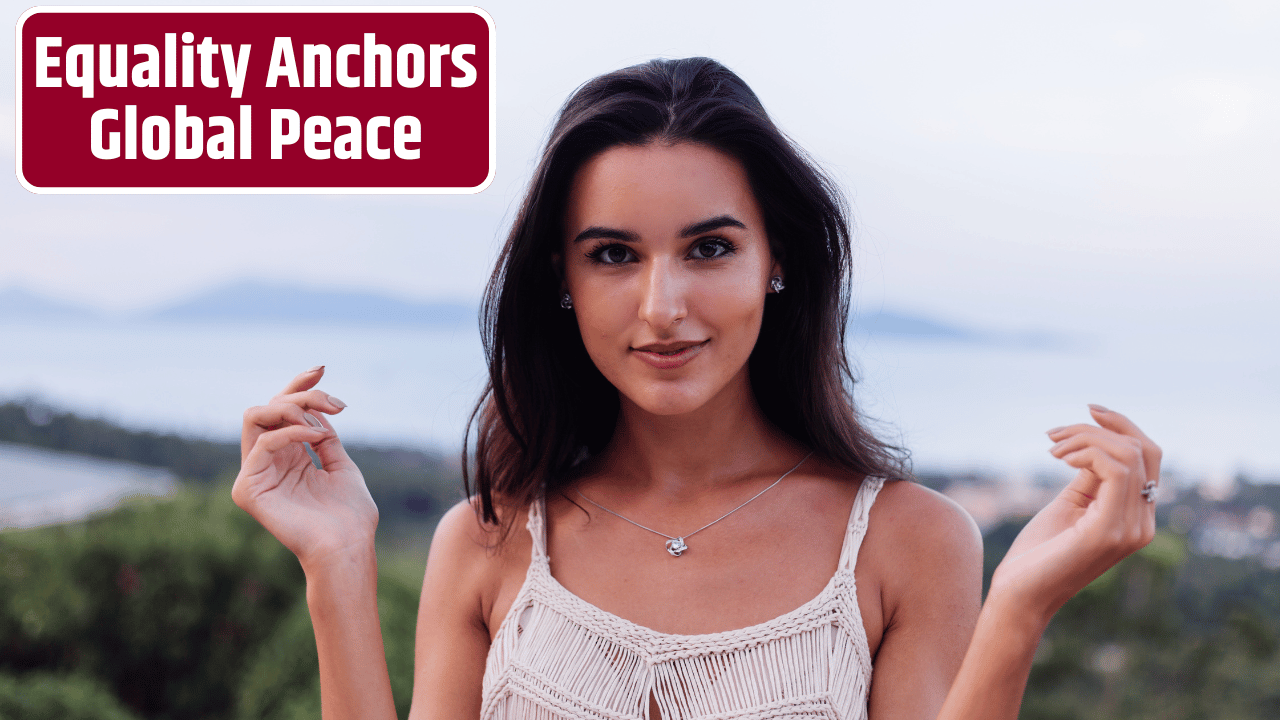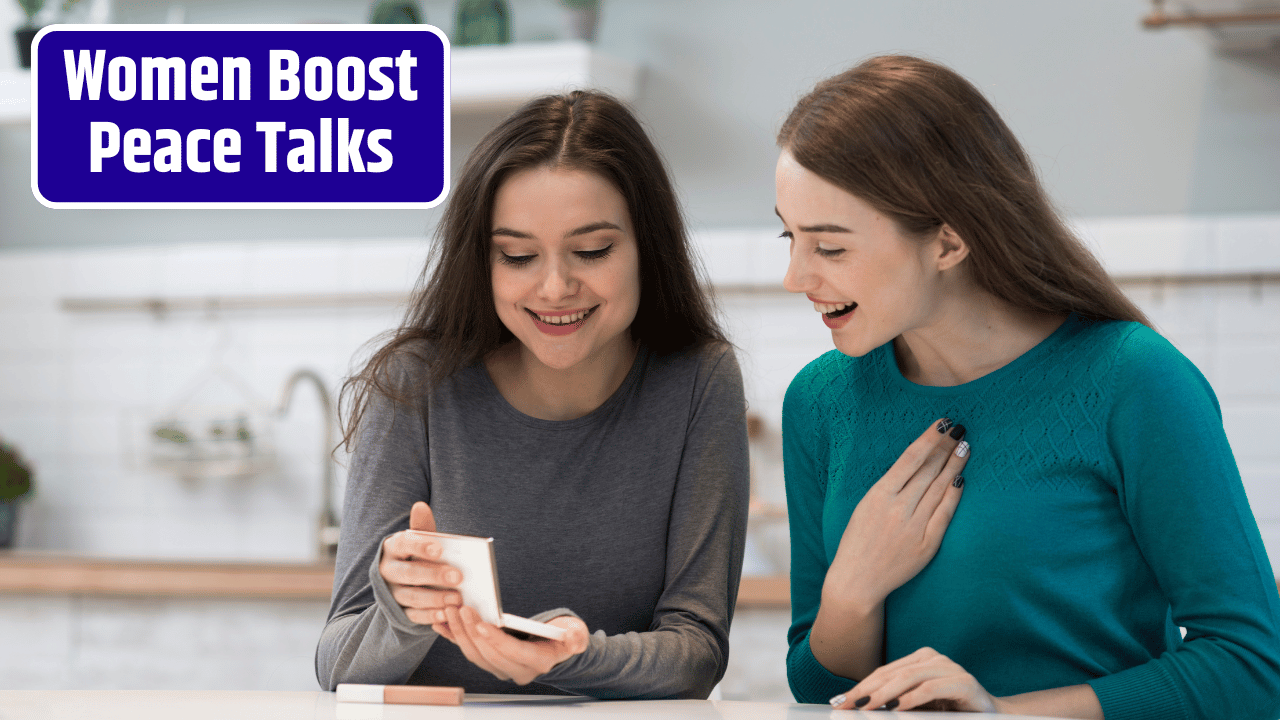Let’s start with the truth they don’t teach in school:
Wars may be waged by men, but peace is too often left for women to pick up the pieces.
The shattered homes. The fractured communities. The empty classrooms.
Women are there, in the wreckage, rebuilding what war broke.
But here’s the twist—when included, women don’t just rebuild peace.
They sustain it.
They expand it.
They protect it.
And yet, global systems still treat women like optional extras in peacebuilding—”nice to have,” but not essential. That mindset? It’s costing us lives, stability, and billions in lost progress.
Table of Contents
The Peace-Gender Connection: What the Data Shows
This isn’t just feel-good activism. It’s evidence-based strategy.
The correlation between gender equality and global peace is not just strong—it’s staggering.
“The best predictor of a state’s peacefulness is how well it treats its women.”
— Valerie Hudson, Sex and World Peace
Let’s lay out the numbers:
| Metric | Gender-Inclusive Peace | Male-Dominated Peace |
| Agreement durability | 64% more likely to last over 15 years | High relapse into conflict |
| Public trust in outcomes | Higher, with broader social buy-in | Often viewed as elite-driven |
| Protection for vulnerable groups | Prioritized and institutionalized | Frequently overlooked |
| Scope of post-conflict recovery | Includes education, trauma healing, and community-building | Focuses on military, infrastructure |
In short: when women are at the table, peace becomes more than a pause in fighting. It becomes a future.
What Happens When Women Lead?
Let’s talk results—not rhetoric.
- In Liberia, it was women’s nonviolent protests that led to the end of a 14-year civil war. Not only did they help force a ceasefire, they ushered in Africa’s first elected female president.
- In the Philippines, women were instrumental in the success of the Bangsamoro peace process, ensuring community needs weren’t drowned out by political wrangling.
- In Northern Ireland, the Women’s Coalition helped shape the Good Friday Agreement by focusing on everyday concerns—housing, education, reconciliation—alongside the “big” issues.
Women shift the focus from power-sharing to people-building. And that’s exactly what long-term peace demands.
Why Gender Equality = Peace Potential
Think of gender equality not just as a fairness issue—but as a stability strategy.
Countries that invest in girls’ education, women’s economic empowerment, and gender-based protections are:
- More resilient to internal unrest
- Less likely to experience civil war
- More inclusive, democratic, and economically secure
In fact, the Global Peace Index consistently shows that the most gender-equal countries are also the most peaceful. Coincidence? Nah. It’s cause and effect.
Why Aren’t Women More Involved in Peace?
Short answer? Systems weren’t built for them.
Long answer? Here’s what women peacebuilders face every day:
| Obstacle | Reality |
|---|---|
| Tokenism | Brought in late, given no power or real voice |
| Funding gaps | Less than 1% of peacebuilding funds go to women’s orgs |
| Safety risks | Harassment, threats, even assassination in conflict zones |
| Dismissal of grassroots efforts | Informal work seen as less “serious” than official diplomacy |
It’s not a matter of capacity. It’s a matter of access. And the global community is still failing to remove the damn roadblocks.
What Needs to Change—Right Now
If peace really is the goal, gender equality isn’t negotiable. It’s foundational. Here’s where to start:
- Mandatory gender quotas in all peace processes and delegations
- Increased funding for grassroots, women-led peace organizations
- Legal protections for women peacebuilders and human rights defenders
- Gender mainstreaming in military, diplomatic, and post-conflict policies
- Accountability for countries and institutions that leave women out
This isn’t charity—it’s strategy. And the cost of ignoring it? More failed peace deals, more broken communities, more preventable wars.
The Ripple Effect of Inclusion
When women lead peacebuilding, the benefits don’t stop at the ceasefire.
- Girls return to school
- Health systems rebuild
- Small businesses reopen
- Communities reconnect
- Truth and reconciliation efforts take root
It’s a multiplier effect. One empowered woman becomes a force of stability. A coalition of them? That’s a movement.
We’ve tried male-only peace deals. They don’t stick.
We’ve invested billions in post-war reconstruction without addressing the needs of women. It hasn’t worked.
We’ve sidelined half the population during the most critical decisions of our time.
Isn’t it time we did better?
Peace doesn’t just begin at the negotiating table. It begins in classrooms, clinics, kitchens, and community centers.
It begins with her—if we let it.
FAQs
Isn’t peace supposed to be gender-neutral?
Peace should benefit everyone, but conflicts don’t impact everyone the same way. Women face specific risks—and bring unique solutions.
Why does funding still exclude women-led peacebuilding?
Bureaucratic barriers, lack of political will, and outdated views about who gets to make decisions in diplomacy.
What can individuals do to help?
Support grassroots women-led orgs, pressure governments to enforce gender quotas, and amplify stories of female peacebuilders.














